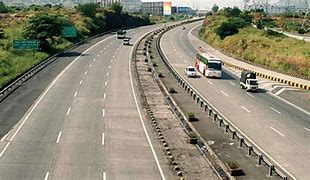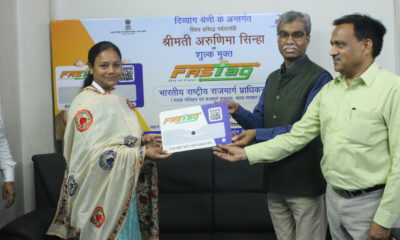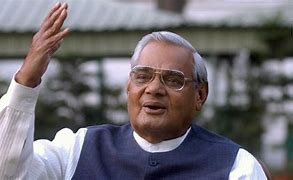Feature
Cabinet approves project-exit policy for highways developers

New Delhi: The government on Wednesday approved a project-exit policy for highway developers and also authorised the state-run National Highways Authority of India (NHAI) to intervene in languishing projects that are suffering from lack of funds.
The Cabinet Committee on Economic Affairs (CCEA), in a meeting here chaired by Prime Minister Narendra Modi, cleared the two proposals to give a renewed thrust to the highways sector.
According to the CCEA, the comprehensive ‘exit policy’ framework now permits developers to divest 100 percent equity two years after the completion of construction.
“It is relevant to note here that during the last few years, PPP projects have not been able to attract bids; one of the primary reasons being lack of availability of equity in the market among qualified bidders,” the CCEA said in a statement adding that the move will unlock equity from completed projects that can then be re-invested into new projects.
“This decision will also harmonise conditions uniformly across all concessions signed prior to 2009 with the policy framework for post-2009 contracts,” the statement said.
The statement pointed out that there are 80 such Build, Operate and Transfer (BOT) projects awarded prior to 2009 that have been completed and the lock-in equity in them works out to be Rs.4,500 crore.
“Once this (equity) is unlocked and is re-invested in new projects, this could support 1,500 kms of new c in PPP mode, thus reviving the response to BOT(T) projects,” the statement said.
On the decision to allow NHAI to intervene in languishing projects, the CCEA said the approval is for projects that are in advanced stage of completion but are stuck due to lack of additional equity or the lenders’ inability to disburse funds further.
The statement elaborated that NHAI will provide funds to such projects from within its overall budget on a loan basis at a pre-determined rate of return.
“This loan is to be recovered along with interest as the first charge from the toll receipts immediately after completion of construction,” the statement added.
Estimates with the government show that there are 16 projects that are languishing in various part of the country due to lack of funds.
Entertainment
Meghalaya Reserves Legalized Gambling and Sports Betting for Tourists

The State Scores Extra High on Gaming-Friendly Industry Index
Meghalaya scored 92.85 out of 100 possible points in a Gaming Industry Index and proved to be India’s most gaming-friendly state following its recent profound legislation changes over the field allowing land-based and online gaming, including games of chance, under a licensing regime.
The index by the UK India Business Council (UKIBC) uses a scale of 0 to 100 to measure the level of legalisation on gambling and betting achieved by a state based on the scores over a set of seven different games – lottery, horse racing, betting on sports, poker, rummy, casino and fantasy sports
Starting from February last year, Meghalaya became the third state in India’s northeast to legalise gambling and betting after Sikkim and Nagaland. After consultations with the UKIBC, the state proceeded with the adoption of the Meghalaya Regulation of Gaming Act, 2021 and the nullification of the Meghalaya Prevention of Gambling Act, 1970. Subsequently in December, the Meghalaya Regulation of Gaming Rules, 2021 were notified and came into force.
All for the Tourists
The move to legalise and license various forms of offline and online betting and gambling in Meghalaya is aimed at boosting tourism and creating jobs, and altogether raising taxation revenues for the northeastern state. At the same time, the opportunities to bet and gamble legally will be reserved only for tourists and visitors.
“We came out with a Gaming Act and subsequently framed the Regulation of Gaming Rules, 2021. The government will accordingly issue licenses to operate games of skill and chance, both online and offline,” said James P. K. Sangma, Meghalaya State Law and Taxation Minister speaking in the capital city of Shillong. “But the legalized gambling and gaming will only be for tourists and not residents of Meghalaya,” he continued.
To be allowed to play, tourists and people visiting the state for work or business purposes will have to prove their non-resident status by presenting appropriate documents, in a process similar to a bank KYC (Know Your Customer) procedure.
Meghalaya Reaches Out to a Vast Market
With 140 millions of people in India estimated to bet regularly on sports, and a total of 370 million desi bettors around prominent sporting events, as per data from one of the latest reports by Esse N Videri, Meghalaya is set to reach out and take a piece of a vast market.
Estimates on the financial value of India’s sports betting market, combined across all types of offline channels and online sports and cricket predictions and betting platforms, speak about amounts between $130 and $150 billion (roughly between ₹9.7 and ₹11.5 lakh crore).
Andhra Pradesh, Telangana and Delhi are shown to deliver the highest number of bettors and Meghalaya can count on substantial tourists flow from their betting circles. The sports betting communities of Karnataka, Maharashtra, Uttar Pradesh and Haryana are also not to be underestimated.
Among the sports, cricket is most popular, registering 68 percent of the total bet count analyzed by Esse N Videri. Football takes second position with 11 percent of the bets, followed by betting on FIFA at 7 percent and on eCricket at 5 percent. The last position in the Top 5 of popular sports for betting in India is taken by tennis with 3 percent of the bet count.
Local Citizens will Still have Their Teer Betting
Meghalaya residents will still be permitted to participate in teer betting over arrow-shooting results. Teer is a traditional method of gambling, somewhat similar to a lottery draw, and held under the rules of the Meghalaya Regulation of the Game of Arrow Shooting and the Sale of Teer Tickets Act, 2018.
Teer includes bettors wagering on the number of arrows that reach the target which is placed about 50 meters away from a team of 20 archers positioned in a semicircle.
The archers shoot volleys of arrows at the target for ten minutes, and players place their bets choosing a number between 0 and 99 trying to guess the last two digits of the number of arrows that successfully pierce the target.
If, for example, the number of hits is 256, anyone who has bet on 56 wins an amount eight times bigger than their wager.























